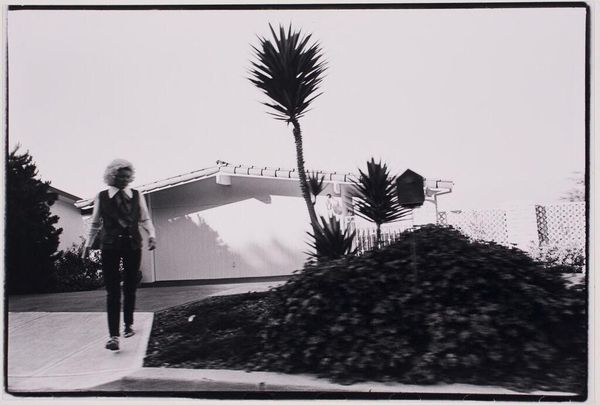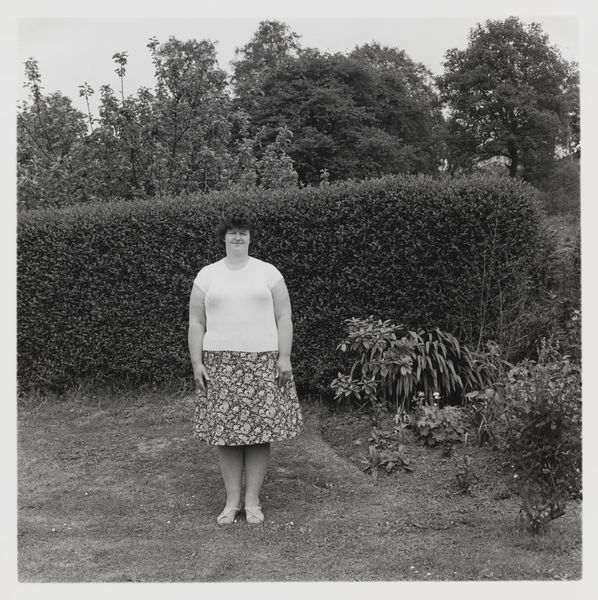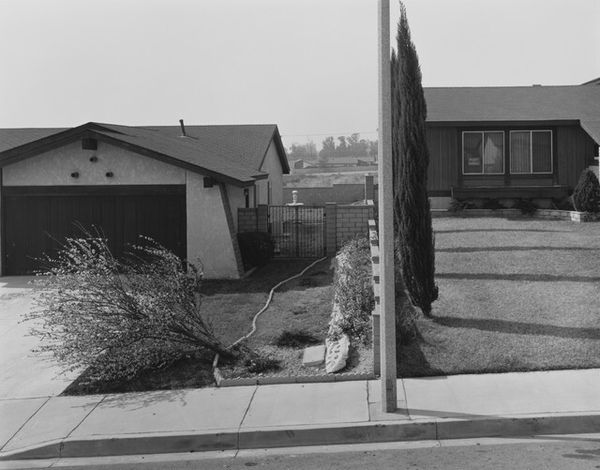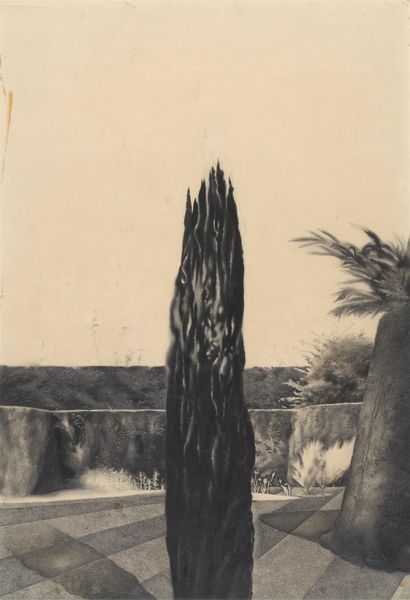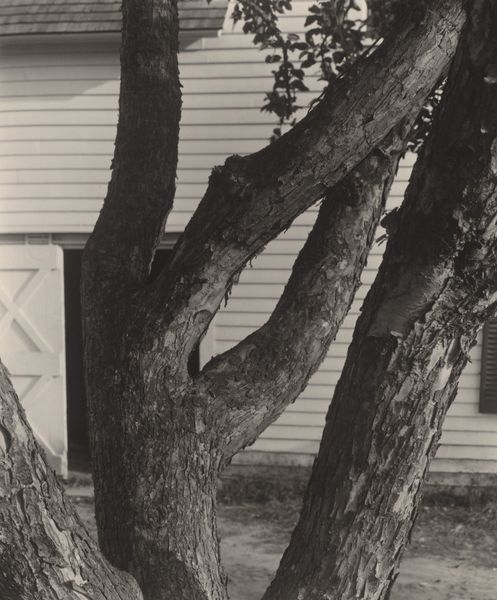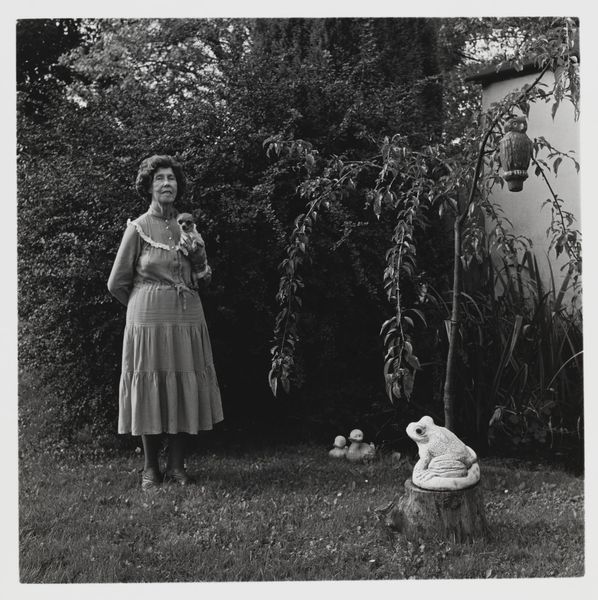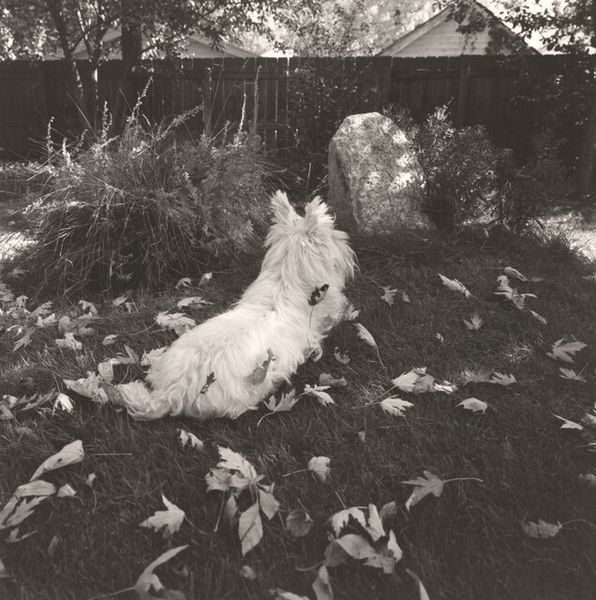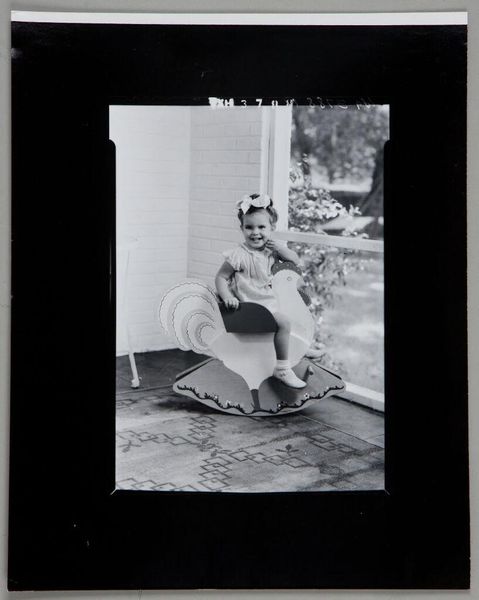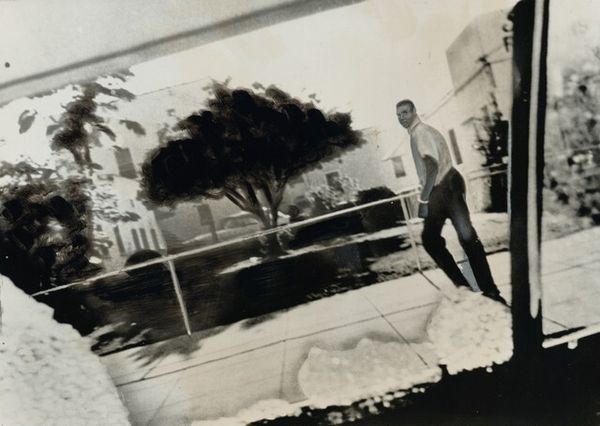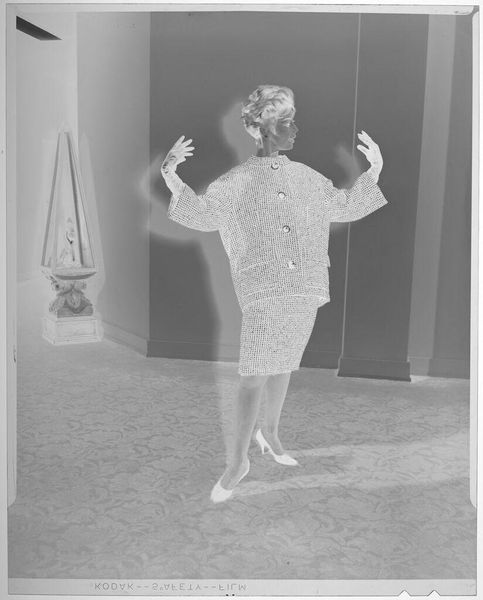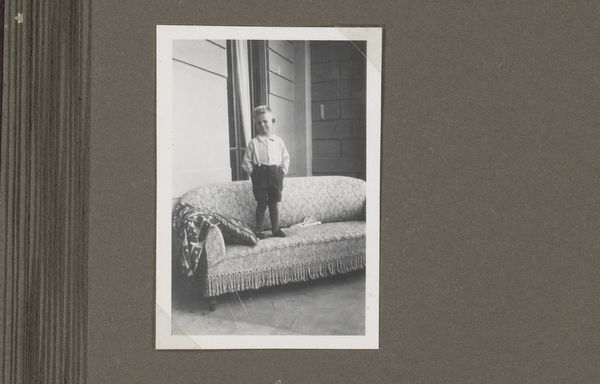
photography
#
portrait
#
contemporary
#
sculpture
#
landscape
#
photography
#
monochrome photography
#
realism
Dimensions: image: 20.32 × 25.08 cm (8 × 9 7/8 in.) sheet: 27.94 × 35.56 cm (11 × 14 in.)
Copyright: National Gallery of Art: CC0 1.0
Editor: This photograph, "Eva Williamson, 9425 Arrowhead Drive" by Allen Dutton, was taken in 1985. It seems like a straightforward portrait, but there’s something very surreal and staged about the whole composition. How do you interpret this work? Curator: Well, on the surface, it reads as a simple portrait. However, photographs like this often belie complex narratives of gender, class, and the performance of identity within a specific socio-economic context. The very act of meticulously staging this portrait – the pruned landscape, the proud homeowner – speaks volumes. Who is she performing for? What kind of values are subtly presented by these details? Editor: The staging really stood out to me too. Is it a commentary on suburban ideals? Curator: Perhaps. Think about the period. The 1980s were a time of shifting cultural values, marked by an increase in home ownership, and a very gendered division of labor. Consider also how the composition centers her not as an individual but as a figure intrinsically linked to her property, her domain. This poses the question, how are identities constructed and maintained within such carefully cultivated environments? What anxieties might drive someone to meticulously manicure both their lawns and their image? Editor: So it's more than just a portrait; it’s a commentary on societal expectations and the pressure to conform to an ideal? Curator: Precisely. It uses the domestic space as a lens through which to examine broader themes of conformity, aspiration, and the hidden anxieties that might bubble beneath the surface of the American Dream. By deconstructing seemingly innocent photographs like this, we expose the silent mechanisms of social control at play. Editor: That really changes how I see the photo. I initially saw it as just a simple portrait, but now I understand how much more is going on beneath the surface. Curator: Exactly. The image now poses questions rather than giving answers. Always think about the underlying dialogue with contemporary theory, as it allows you to see this work under a new light.
Comments
No comments
Be the first to comment and join the conversation on the ultimate creative platform.

